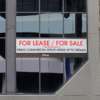In early July 2025, Congress passed what has been branded as the “Big Beautiful Bill”—a sweeping piece of legislation that delivers extensive tax cuts, entitlement reforms, and energy rollbacks. While much of the media has focused on the bill’s political implications or its effect on household budgets, commercial real estate (CRE) professionals should be paying close attention to how this law reshapes our industry.
Here’s a breakdown of the most relevant changes in the Big Beautiful Bill—and what they might mean for CRE investors, developers, and tenants.
Permanent Tax Cuts Drive Demand in Key Asset Classes
At the heart of the Big Beautiful Bill are permanent extensions of the 2017 Tax Cuts and Jobs Act, which lock in lower corporate and individual tax rates (Wall Street Journal). That’s a potential boon for small and midsize businesses—many of whom occupy retail, office, and flex space.
Expect increased leasing activity from medical groups, service providers, and franchisees who now retain more income and may look to expand footprints, especially in suburban and Sun Belt markets where affordability remains attractive.
No Tax on Car Loan Interest Could Fuel Retail and Auto-Oriented Development
The bill also introduces a provision that allows individuals to deduct interest on car loans—a rare reversal of prior tax treatment. For suburban CRE markets, this matters. Why?
Because car-centric lifestyles drive retail foot traffic in power centers, drive-thrus, and auto service properties. As consumers get a break on vehicle financing, their mobility improves—which can revitalize car-dependent commercial corridors. Think: outparcels, convenience retail, and highway-adjacent developments.
Border & Security Spending May Catalyze Industrial Growth
The legislation earmarks $70 billion for border security, including infrastructure and staffing (Investors.com). While controversial, this surge in federal spending may create indirect demand for industrial and logistics assets along U.S. border regions—spurring contractor activity, temporary workforce needs, and warehousing demand.
CRE investors with assets near major border crossings (Arizona, Texas, California) could see opportunities tied to public-private logistics partnerships or redevelopment of older warehouse stock.
Rollback of Clean Energy Incentives Creates Headwinds for ESG-Oriented CRE
One of the bill’s more contentious elements is its repeal or scaling back of Biden-era renewable energy credits, particularly those involving international suppliers like China (American Progress).
That’s bad news for ESG-minded investors and developers who were leveraging those credits to reduce upfront costs on solar, EV infrastructure, and LEED certifications. With incentives dialed back, financing high-efficiency retrofits may become less viable—especially in older retail or industrial properties.
MAGA Savings Accounts May Influence Long-Term Homeownership—and CRE Strategy
Although not immediately impactful to CRE, the introduction of MAGA child savings accounts—with $1,000 federal seed contributions—could boost long-term demand for entry-level housing and small business space (Business Insider).
These tax-advantaged accounts, which grow over time and allow withdrawals for home purchases or entrepreneurship, may eventually fuel a new generation of first-time buyers, franchisees, and small business tenants—particularly in suburban or exurban markets.
Increased Deficits Could Pressure Interest Rates and CRE Lending
Perhaps the biggest long-term risk: the bill’s estimated $2.5 trillion increase in deficits over 10 years (Congressional Budget Office). While tax cuts may stimulate growth, higher deficits often result in upward pressure on interest rates, which could dampen CRE development and refinancing activity—particularly in sectors like office and hotel, where cap rates remain compressed.
Final Takeaway
Whether you view the Big Beautiful Bill as a stimulus or a gamble, one thing is clear: policy shapes property. For commercial real estate stakeholders, understanding the economic levers within this legislation is essential. From retail site selection to industrial leasing to ESG retrofits, this bill will change how capital moves and how tenants plan.
At ICRE, we stay ahead of these shifts so you don’t have to. Whether you’re a developer, investor, or healthcare group evaluating next steps, our team is here to help you assess the impact, underwrite risk, and position your real estate strategy for long-term success.
Ready to navigate what the Big Beautiful Bill means for your portfolio? Connect with us today.
















